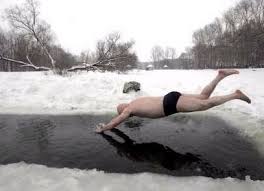 Winter is beginning to give way to spring. And with milder weather, thoughts turn to diving. After a few months without a scuba fix, many divers are eager to get back into the water. Lots of divers around here (northwest Ohio) start their dive season in March or April. This time of year, the water is still cold even though we get some nice, warm days topside. The water in our local quarries is currently about 38 degrees (F) from the surface all the way down to the bottom. If you’re getting ready to begin your 2016 dive season, here are a few tips to keep you comfortable.
Winter is beginning to give way to spring. And with milder weather, thoughts turn to diving. After a few months without a scuba fix, many divers are eager to get back into the water. Lots of divers around here (northwest Ohio) start their dive season in March or April. This time of year, the water is still cold even though we get some nice, warm days topside. The water in our local quarries is currently about 38 degrees (F) from the surface all the way down to the bottom. If you’re getting ready to begin your 2016 dive season, here are a few tips to keep you comfortable.
Stay Dry A good drysuit is absolutely necessary to dive in cold water with any degree of comfort. If your drysuit leaks, you get wet, and wet equals cold. If your suit leaks, find out why and fix it. In addition to the drysuit itself, consider adding dry gloves. I can still remember when I switched from wet gloves to dry gloves years ago. It was a game changer. Having warm hands was the single biggest boost to my diving enjoyment since buying a drysuit. Numb hands completely negate the benefit and enjoyment of a drysuit. While not nearly as popular as dry gloves, it is possible to have your suit fitted with a dry hood as well.
Stay Warm Drysuits keep you dry, not warm. The undergarments you wear under your drysuit keep you warm. If you have not looked at drysuit undergarments in the past few years, you are in for a surprise. Years ago, the philosophy for cold water diving was to wear as thick and heavy an undergarment as possible. Thick and heavy was thought to mean warm. Modern technology has provided us with better insulating fabrics and better ideas. Diving has finally caught up with other cold weather sports in embracing the layering concept. Namely, multiple layers of different types of insulation are more effective than one big, thick undergarment. So instead of wearing your thick “wooly bear” jumpsuit, you may be warmer in a base layer plus one or two other layers. Several manufacturers also make electrically heated undergarments. Some are vests, designed to keep your core warm while others heat the entire undersuit to keep your whole body warm. All of these systems requires batteries to power them. Some batteries go inside your drysuit. Some use external batteries requiring a waterproof connection through your drysuit. If you dive a drysuit but still get chilly, it’s time to check out some of the new undergarments available today.
Argon For years some divers have insisted that using argon to inflate your drysuit will keep you warmer than using air as a suit inflation gas. I think this is one of those practices from the early days of technical diving that sounded like it should work, but was never really tested. The theory is that since argon is denser than air, it is a better insulator, hence keeps you warmer. Argon is dense. It does insulate. But not in your drysuit. There have been several studies and none of them indicate any advantage of using argon in your suit instead of air. An abstract of one such study can be found here.
Adjust your bottom time During the summer months, it’s not unusual to stay underwater a long time, even in cold water, because you know the water closer to the surface is warm. We don’t have that advantage this time of year. The water is cold from top to bottom. You may want to shorten your bottom time and plan to be at your exit point before you get too cold.
Topside Don’t forget to stay warm before and after dives this time of year. Conserve your body heat before dives even if it seems to be a warm spring day. Have warm, dry clothes to put on after the dive to rebuild body heat. Don’t forget your hat and gloves either.
Life Support While it doesn’t necessarily contribute to staying warm, I can’t end our discussion without mentioning your life support equipment. Before jumping into near-freezing water, be sure your regulator is designed to perform well in cold water and visit your local service facility to make sure it’s in good condition.
Summary As Great Lakes divers, we’re used to cold water. But this time, of the year the water may be even colder than we’re used to. But cold water doesn’t mean that diving has to be miserable, as long as you dress for the weather!
